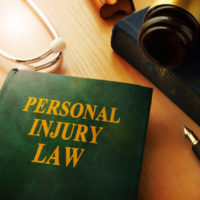Road Safety Statistics 2019
August 29, 2019 According to statistics, in the United State, injuries – like those sustained in motor vehicle collisions – are the leading cause of death for people ages 1-44. According to the Centers for Disease Control and Prevention (CDC), over 32,000 people die in motor vehicle crashes every year, and approximately 2 million others are injured.
According to statistics, in the United State, injuries – like those sustained in motor vehicle collisions – are the leading cause of death for people ages 1-44. According to the Centers for Disease Control and Prevention (CDC), over 32,000 people die in motor vehicle crashes every year, and approximately 2 million others are injured.
Recent national data highlights several key driving issues – like speeding and aggressive driving – and also puts forth information on how drivers can help keep pedestrians and children safe. In an effort to promote staying safe and responsible behind the wheel, our firm has compiled much of the report’s useful data below. Somewhere between 5 and 6 million crashes happen every year, so being informed is one of the best ways to decrease preventable and deadly accidents.
Pedestrian Safety Data
According to the National Highway Transportation Safety Administration, or NHTSA, a pedestrian dies in a traffic crash every 1.5 hours. Of these fatalities, 74% happen at night, more than 70% happen at unmarked or unofficial intersections, 15% involve drunk drivers, and 35% involve pedestrians who are legally intoxicated themselves.
Pedestrians are more likely to experience fatal injuries because of their lack of physical protection. While pedestrians have a 90% chance of surviving crashes at 30 mph or below, their chances for surviving crashes at higher speeds are 50% — or even less. Here are a few other statistics that illustrate how speed compromises pedestrian survival rates:
- When a pedestrian is struck by a vehicle traveling 20 mph, he or she has a 20% chance of dying, and:
- Pedestrians hit by cars that are traveling 40 mph have an 80% chance of dying
To protect themselves, pedestrians should always look both ways and cross only at marked intersections (e.g. stop signs, stop lights, pedestrian crosswalks, etc.). Distraction is not just deadly for drivers, but it is deadly for pedestrians, too. Avoid listening to music, using your cell phone, and participating in other distracting behaviors while walking.
Aggressive Driving Stats
Aggressive driving is when a person operates a vehicle in a way that is unsafe – and hostile – to other drivers on the road. There are many different behaviors that are considered aggressive driving, like:
- Speeding;
- Cutting off other drivers;
- Tailgating (driving too closely behind another vehicle);
- Unsafe passing (e.g. passing on the wrong side, with too little space left between vehicles, etc.), and:
- Denying another driver with his or her right of way
In a recent Safe Motorist poll, nearly half of drivers who said they had been on the receiving end of someone else’s aggressive driving admitted that they responded by driving aggressively themselves. Younger drivers and male drivers are more likely to be involved in aggressive driving-related crashes than other groups, and in as many as 37% of aggressive driving cases, a firearm is involved.
The Federal Highway Administration (FHWA) has several tips for avoiding problems with aggressive drivers. Here are just a few examples:
- Do not block the passing lane, move over to the right. This is especially important if you are driving slower than other traffic;
- Do not challenge an aggressive driver. This means avoiding eye contact and ignoring rude gestures and/or comments;
- Do your best to stay relaxed and calm. It is easy to get swept up in the moment, but remind yourself of where you are going and how important it is to get there safely;
- Get out of an aggressive driver’s way, and try to stay away from them on the road, and:
- If you can, dial #77 or local police to report an aggressive driver.
The Consequences of Speeding
Speed-related accidents account for a whopping one-third of all motor vehicle-related deaths. Speeding and aggressive driving often go hand-in-hand: more than one-half of the total yearly accidents involve aggressive drivers who are also speeding at the time of the incident. Some drivers believe that going 5-to-10 mph over the speed limit is not “really” speeding – but it absolutely is. When a driver goes 10 mph over the speed limit, his or her chances of getting into a deadly crash increases nearly 10%.
15-to-20-year-olds are the most at-risk age group for getting into speed-related crashes. Because teen drivers are more likely to be involved in speed-related crashes than older drivers are, it is crucial to talk to them about obeying all posted speed limits. The NHTSA reports speed as the primary factor in 31% of all teen driver fatalities. If you would like to learn more about how to talk to your teen about driving safely, please visit website.
Keeping Children Safe
Children face an array of transportation-related hazards, such as:
- The NHTSA says heatstroke is a leading cause of non-crash related fatalities in children, and:
- Children under the age of 5 face high risks for back-over-injuries or death. Back over injuries occur when a vehicle hits a child while driving in reverse (and more than one-half of these accidents involve SUVs or trucks.)
It does not have to be that hot outside for the temperature inside a car to become deadly. On a day in the mid 60’s, interior car temperatures can reach 110 degrees Fahrenheit. Car temperatures go up rapidly: in just ten minutes, temperatures can increase by as much as 20 degrees. Never leave a child unattended in a vehicle, regardless of the weather. To avoid back -over-related injuries and deaths, get in the habit of scanning your vehicle’s surroundings for children, and keep the driver’s side window open in case a child calls out for help.
Seatbelts and support systems save lives, so be sure to always buckle up – and for children in booster seats, ensure that you follow all guidelines along with weight and height requirements. Data consistently shows that parents who set a good example by wearing their seatbelts and driving without distractions make a positive (and lifesaving) impact on kids and teens.
Were You Injured in a Car Accident?
Getting injured in a car accident can be a scary and overwhelming time. Victims tend to miss time from work, medical bills start piling up, and often there are questions about what happened and why. If another driver was responsible for your injuries, it is advisable to talk with a lawyer. If you have questions about your automobile accident, please contact a representative at our firm directly.
Philadelphia Personal Injury Lawyers at Galfand Berger, LLP Represent Victims of Automobile Crashes
If you were injured in an automobile accident, please contact our Philadelphia personal injury lawyers at Galfand Berger. With offices located in Philadelphia, Bethlehem, Lancaster, and Reading we serve clients throughout Pennsylvania and New Jersey. To schedule a consultation, call us at 800-222-8792 or complete our online contact form.
 Google Screened
Google Screened
